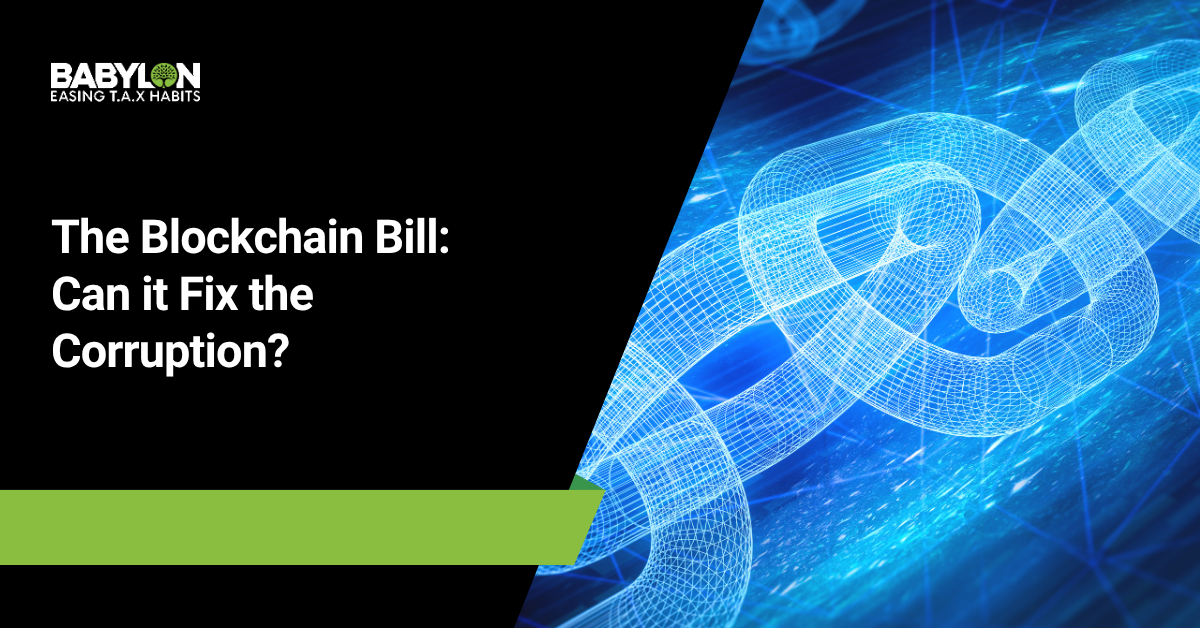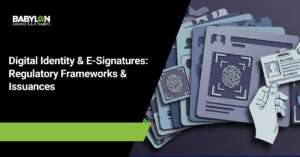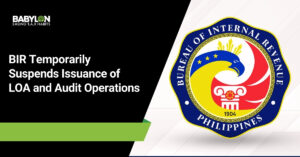When was the last time you checked where your taxes really went? — Ghost projects, delayed infrastructure or projects, contracts that vanished into thin air. Corruption in the Philippine governance is truly an old, deeply-rooted enemy of the public, draining the trust and hopes of the people. We have seen numerous reforms and promises, yet the problem persists.
But, what if the solution was not just about changing, but changing the system itself? There’s a new proposal in town: using Blockchain Technology to lock down the budgeting process so that every peso spent by the government is traceable. Senator Bam Aquino’s Senate Bill 1330 (Blockchain the Budget Bill) is being pushed for maximum transparency — from allocation of funds to auditing. The big question is:
Can this technology actually fix corruption, or is it just another tech-driven promise without effect?
What is Blockchain?
Before answering the question, let us first understand what blockchain technology is. Imagine a digital ledger that is being copied and spread across a network of computers. Every time a transaction occurs or a piece of data is added (a block), it is linked to the previous one, creating the “chain” that serves as a reference for everyone accessing that digital ledger.
This structure has 3 aspects against corruption:
- Immutable Ledger: Once a record is entered into the data, it is virtually impossible to change or delete. To change one record, you would have to change all subsequent records across the entire ledger, making it practically have no room for changes that leave no traces.
- Extreme Transparency: The ledger is published publicly. All authorized participants can see the entries or transactions made, whether it is a government contract entered into or a payment being made.
- Decentralization: The digital ledger is not stored in one central server that can be manipulated by a single corrupt official. It is distributed, making it persistent against hacking and errors.
Thus, in essence, Blockchain is not a magic tool — it does not fix human failures or dishonesty in itself but builds safeguard that makes misuse riskier and more visible to the general public.
What’s in Senator Bam Aquino’s “Blockchain the Budget” Bill?
Senator Bam Aquino’s proposed Blockchain Innovation Act aims to formally recognize blockchain as an emerging and powerful technology, while encouraging the Philippine government to explore its application in delivering more efficient, transparent, and accountable service to the public.
At its core, the bill envisioned a National Budget Blockchain System. This framework would make the entire flow of public funds traceable, audit-ready, and accessible in real time to citizens. All budget-related documents, including allocations, disbursements, procurement records, and project updates, would be recorded as Digital Public Assets (DPAs) on blockchain.
The measure designated the Department of Information and Communications Technology (DICT) as the leading agency for implementation, working in coordination with the Department of Budget and Management (DBM) and the Commission on Audit (COA). A public transparency portal was also proposed, allowing citizens, civil society groups, and oversight bodies to verify how every peso is allocated and spent independently by the government.
While the proposal was an ambitious initiative towards transparency, marking one of the earliest attempts to “Blockchain the Budget”, the Senate hearings underscored that its implementation must be phased, carefully designed, and guided by strong political will. Lawmakers and experts emphasized several crucial considerations:
- User Design: Systems must be intuitive and accessible to both government workers and ordinary citizens to ensure usability and adoption.
- AI and Analytics Integration: Blockchain data should be complemented with analytics tools to achieve the broader goal of innovative, data-driven governance and to make sense of what is being recorded.
- Infrastructure and Cybersecurity: Ensuring digital inclusivity and robust protection against cyber threats is essential for credibility and trust.
- Interoperability: Systems should be designed so that data can be shared and understood even by ordinary citizens, but technical aspects should not be compromised.
- Data Governance: The principle of “garbage in, garbage forever” highlights that if poor-quality or falsified data is entered, blockchain’s immutability will only preserve the erroneous records, which makes it useless. Therefore, strong data governance shall be strictly observed.
- Legal and Accounting Frameworks: Questions remain on how smart contracts and blockchain records would be treated under existing laws, audit rules, and accounting standards.
Senator Aquino himself acknowledged the legislative and technological limitations of the proposal, admitting that he was wrong for legislating that technology itself. He suggested that future efforts should focus more on creating “tech-flex” policies, adaptable frameworks that highlight the benefits of blockchain without prematurely locking in specific technical details.
From Theory to Actualization: Where It’s Already Tested
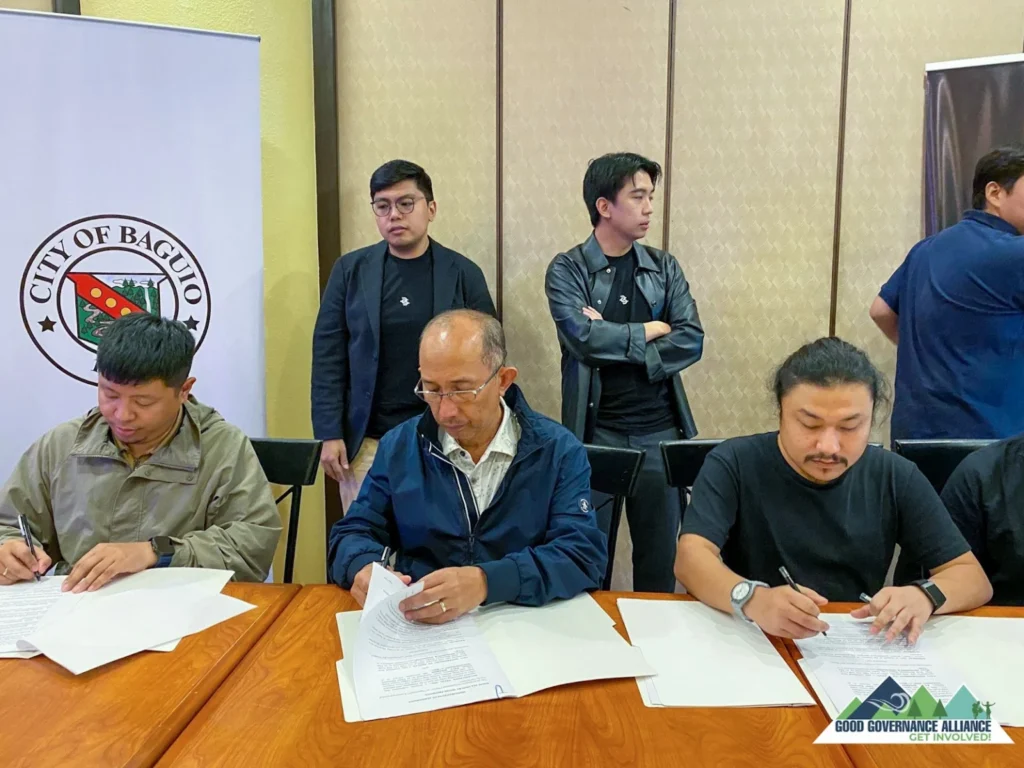
GoodGovChain in Baguio City
Mayor Benjamin Magalong was known for his anti-corruption drive in Baguio City. He teamed up with BayaniChain to pilot the “GoodGovChain” to enhance transparency in budgets, procurement data, and infrastructure projects. By placing these critical areas on a blockchain, the city aims to create a transparent and auditable trail that drastically lessens the abuse of human discretion and opportunities for bribery.
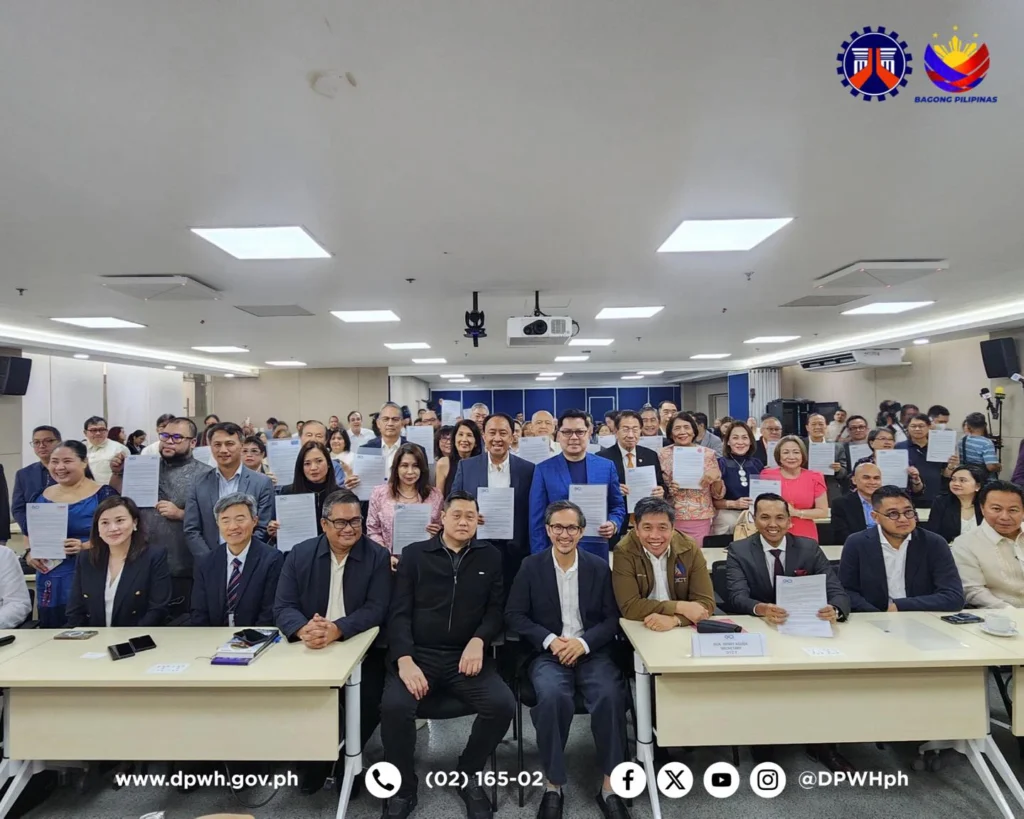
DPWH is going for Integrity Chain
Amidst the ongoing issues regarding Flood Control Projects, DPWH Secretary Dizon has agreed with the Blockchain Council of the Philippines to implement blockchain technology, called Integrity Chain, on September 30, 2025. This movement aims to embed transparency and accountability in infrastructure projects by starting with foreign-assisted ones. Additionally, it was stated by the DPWH that “As part of the pilot, BCP will provide the DPWH with a one-year complimentary subscription to the Integrity Chain, which includes technical support, training, and cybersecurity measures in full compliance with the Data Privacy Act of 2012,”. Therefore, it can be seen as a beacon of hope for fixing the DPWH, and the public can also access these records and ultimately report anomalies in such transactions or situations.
Can it actually fix the Corruption?
With its vast potential, it can be easy to say that blockchain is the ultimate cure for the defects of corruption. Yet, let us weigh what blockchain can actually do for us and what challenges may arise:
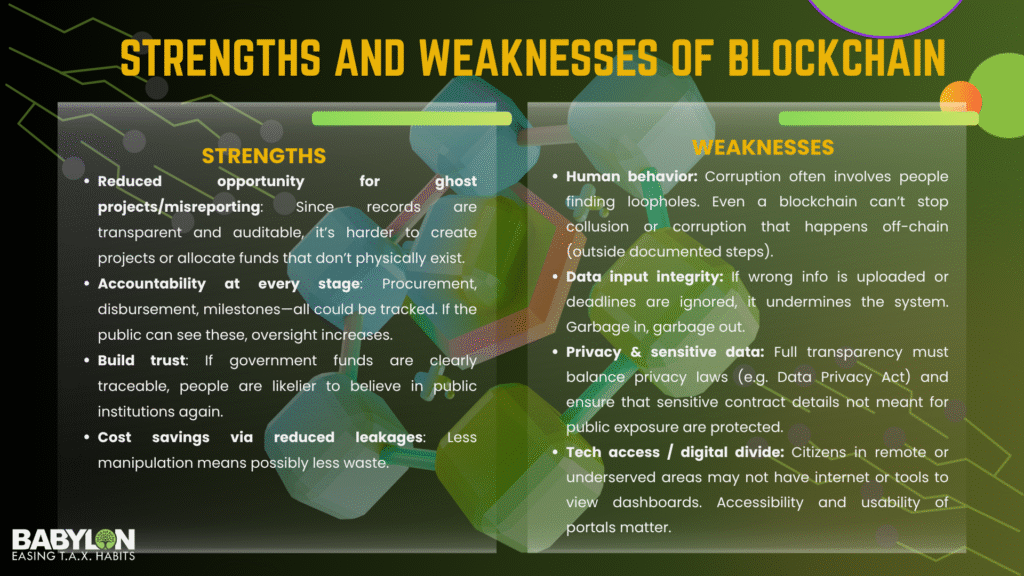
A Powerful Tool but not the Final Cure
So, to wrap it all up, can blockchain fix the corruption? — The answer is clearly no, because technology alone cannot fix an internal human issue.
Nevertheless, the Blockchain Bill endorsed by Senator Aquino can be considered as one of the most powerful tools in fighting against corruption. It significantly changes the environment where corruption thrives by replacing secrecy with transparency, as the general public demands. Through initiated pilots like Baguio’s GoodGovChain and DPWH’s Integrity Chain, it lays the foundation for promoting modernized accountability.
Here in Babylon2k, we support technology that builds trust. The Blockchain Bill can be our pivoting digital tool against irregularities, but only if we demand it. Follow us for more insights and updates, share this article, and let’s make transparency a trend, not just a talking point.
